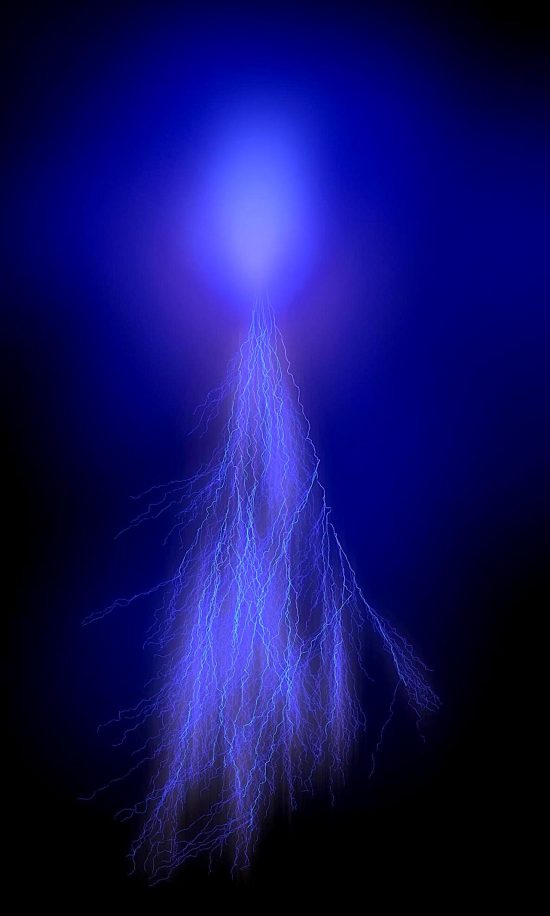
November 4, 2020
Transient optical phenomena dominate Jupiter’s environment.
The Juno spacecraft was launched on August 5, 2011. After a five-year flight, it entered orbit around Jupiter on July 4, 2016. As most readers know, Jupiter is the largest planet, with an equatorial diameter of 142,984 kilometers. it is so large that all of the other planets could fit comfortably inside. Jupiter rotates in 9.925 hours, causing its diameter to be 9275 kilometers more than the distance between its poles.
There are radiation belts around Jupiter, similar to the Van Allen radiation belts that surround Earth, except they are thousands of times greater in strength and extent. On its way to Jupiter, Juno’s trajectory, as it used Earth for a “gravity assist“, allowed scientists to track its passage through Earth’s electric fields using the Van Allen probes, launched into orbit on August 30, 2012.
Formerly known as the Radiation Belt Storm Probes (RBSP), the Van Allen satellite team is studying the interaction between the Sun and near-Earth space. They do this by interpreting the behavior of Earth’s radiation belts, and the way that high speed electrons and ions, otherwise known as plasma, are guided or confined by magnetic fields.
The twin Van Allen probes are in highly eccentric orbits, passing each other and dipping in and out of the radiation belts many times. It was the small electrical effects of the Juno probe on the belts that allowed the Van Allen mission to see it passing by, even though it was invisible to optical instruments.
As previously written, energetic electrons around Jupiter radiate in radio frequencies. This led to the discovery that Jupiter has a magnetic field. Electric Universe pioneer, Immanuel Velikovsky predicted the gas giant’s magnetic field in October 1953, as well as its powerful radio broadcast. Those phenomena are due to Jupiter’s magnetosphere, which extends outward for nearly 650 million kilometers, beyond Saturn’s orbit.
Since Jupiter’s magnetosphere is so active, gigantic lightning flashes occur in its upper atmosphere. Instead of a 5 gauss magnetic field, the giant planet possesses a 9 gauss field, compared to Earth at .5 gauss. Jupiter’s electrical connection between its four largest moons is demonstrated by the fact that all of them leave trails in Jupiter’s polar aurorae.
These electric indicators point to other phenomena that are detectable in Jupiter’s environment. Recently, “sprites” were seen in the cloud tops by Juno’s Ultraviolet Spectrograph Instrument (UVS). Rohini Giles, a researcher on the Juno team, wrote:
“UVS was designed to characterize Jupiter’s beautiful northern and southern lights, but we discovered UVS images that not only showed Jovian aurora, but also a bright flash of UV light over in the corner where it wasn’t supposed to be.”
Red sprites are lightning-like discharges above thunderstorms, accompanying normal lightning strokes. Red sprites are glowing filaments that often extend to 100 kilometers in altitude. The largest sprites cover horizontal distances of 50 kilometers, with a volume of 10,000 cubic kilometers.
Geophysicists are beginning to realize that sprites are part of every moderate to large storm system. From an Electric Universe perspective, they are manifestations of electricity pouring into plasma double layers. Double layers can accelerate charged particles up to enormous energies in a variety of frequencies, forming “plasma beams”. Double layers dissipate when they accelerate particles, so there must be an external power source supplying them with electric charge. If charge density becomes excessive, double layers can explode, drawing electricity from an entire circuit. Nobel laureate Hannes Alfvén maintained that double layers are unique, and that intense energy sources on Earth and in space could be due to double layers “shorting out” and exploding.
So, electric sprites are an expected phenomenon whenever charge separation occurs in planetary atmospheres.
Stephen Smith












